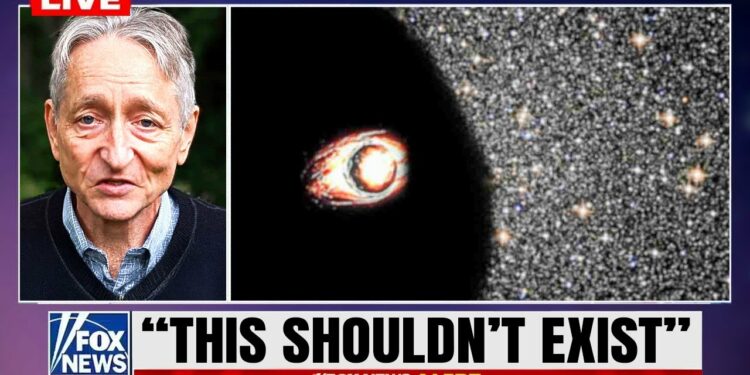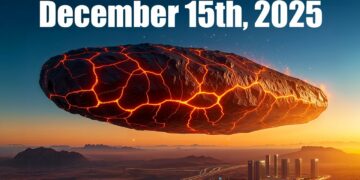The universe, as we know it, is vast and complex, with distant galaxies revealing stars through the lens of advanced technology. The James Webb Space Telescope (JWST) has transformed our understanding of the cosmos, but a Nobel Prize-winning scientist now claims it may have uncovered evidence of an entirely new universe—a discovery that could reshape our knowledge of space and time. For years, scientists have theorized about the existence of other universes, and this finding might be the long-sought breakthrough. Let’s explore what this means.
Introducing the James Webb Telescope
The James Webb Space Telescope, often referred to as JWST or simply Webb, has sparked global excitement among astronomers and space enthusiasts. Unlike older telescopes limited by size and design, JWST’s sensitivity to infrared light allows it to peer into the universe’s earliest stages. As light from distant objects stretches with the universe’s expansion, it shifts to infrared wavelengths, which JWST is uniquely equipped to observe with exceptional clarity.
Its development was a decades-long international effort, with scientists and engineers collaborating to craft its instruments and mirror segments. Once launched, JWST exceeded expectations, capturing images of galaxies that appeared too massive and well-formed for their estimated age, challenging existing models. These unexpected observations have fueled debates about whether the standard cosmological framework needs revision.
The cosmos serves as a time machine: observing objects billions of light-years away means looking billions of years into the past. JWST is probing the universe’s infancy, just after the Big Bang, when the first structures formed from hot, dense matter. While the Hubble Space Telescope and ground-based observatories suggested a slow buildup of stars and galaxies over hundreds of millions of years, JWST has revealed bright, mature-looking galaxies existing just 200–300 million years after the Big Bang. This raises questions about whether cosmic systems formed faster than previously thought, prompting intense efforts to explain these findings.
The Potential for a Paradigm Shift
Astronomy has a history of transformative leaps, from debunking Earth as the universe’s center to discovering the universe’s expansion. JWST continues this tradition by observing cosmic epochs previously only theorized. Its data suggests galaxies formed too quickly or in greater numbers than expected, challenging models of how matter clumps together.
In the standard model, dark matter halos gradually pull matter into structures that seed star and galaxy formation—a process thought to take significant time. However, JWST’s observations of early galaxies with high star formation rates and near-total gas conversion into stars defy these assumptions. Some propose these galaxies’ massive, hot stars exploded in powerful supernovae, rapidly enriching their surroundings with heavier elements. Others suggest dark matter or unknown forces accelerated matter aggregation. If confirmed, these findings could necessitate adjustments to the Lambda Cold Dark Matter (Lambda CDM) model, which describes the universe’s evolution through dark matter and dark energy.
The mass of these galaxies also poses a puzzle. Their apparent heft, so early in cosmic history, suggests either faster matter clumping or errors in redshift measurements used to estimate their distance and age. As JWST captures more deep-field images, the growing number of these anomalies indicates a widespread phenomenon, not isolated outliers. While paradigm shifts are rare and require rigorous verification, JWST’s data is pushing astronomers to reconsider early structure formation timelines and processes.
Key Discoveries in the Early Universe
JWST’s standout achievement is detecting galaxies from when the universe was just a few hundred million years old. These galaxies appear surprisingly massive and numerous, challenging the idea that gravity alone could gather so much matter so quickly. The presence of heavier elements, like carbon and oxygen, in these galaxies suggests rapid stellar recycling or highly energetic star formation, as such elements typically require multiple star generations or supernovae.
The structural diversity of these galaxies is equally striking. Instead of small, irregular star clusters, JWST has found objects with bulges or arms resembling mature galaxies, implying swift gravitational organization or mergers. These findings, if confirmed through detailed spectroscopy, could further strain standard models. Spectroscopy also helps verify redshift measurements, ensuring accurate distance and age estimates. If these galaxies indeed formed shortly after the Big Bang, the tension with existing timelines intensifies.
JWST has also detected signals hinting at supermassive black holes in the early universe, far larger than expected for their era. Standard models assume black holes grew slowly from the collapse of early stars, but these findings suggest alternative formation mechanisms or accelerated growth, possibly driven by abundant material or unique cosmic conditions.
Unexpected Star Formation and Structure
JWST’s data suggests some early galaxies converted nearly all their gas into stars, challenging models where only a fraction of gas forms stars due to feedback mechanisms like supernovae or stellar winds. This high-efficiency star formation may reflect denser gas, stronger radiation fields, or more effective dark matter halos in the early universe. The presence of structured galaxies with discs or bulges further suggests rapid organization, defying expectations of slow evolution through mergers.
Deep spectroscopic surveys are underway to confirm these galaxies’ masses, compositions, and star formation histories. If widespread, these trends could prompt a major rethink of cosmic evolution. Some objects might not even be traditional galaxies but exotic star clusters or bright phenomena, requiring careful cross-referencing with multiple instruments to clarify their nature.
New Tensions with the Standard Model
The Lambda CDM model, which relies on dark matter’s gravitational scaffolding and dark energy’s accelerating expansion, has long explained cosmic phenomena. However, JWST’s findings, combined with existing tensions like discrepancies in the Hubble constant, suggest potential cracks. If early galaxies are consistently too massive or numerous, the model may need adjustments, such as an earlier or more intense star formation phase, revised dark matter properties, or a dynamic dark energy component that varied in the early universe.
Speculative ideas include primordial black holes forming post-Big Bang to seed galaxy growth or slight adjustments to the universe’s age or timeline. While the 13.8-billion-year estimate is well-supported, minor tweaks to early star formation bursts or matter clumping rates remain plausible. Advanced simulations are testing these scenarios, adjusting parameters like dark matter density or gas cooling rates to match JWST’s observations. If discrepancies persist, new physics may be required to explain rapid cosmic evolution.
Possible Explanations and Dark Matter
JWST’s anomalies prompt reevaluation of dark matter and dark energy. If dark matter was less “cold” or behaved differently in the early universe, it could have facilitated faster structure formation. Alternatively, a time-varying dark energy field might have briefly accelerated matter clumping before resuming its expansive role. Primordial black holes could also explain massive galaxies by rapidly drawing in gas, though their formation remains speculative. These ideas, while not mainstream, are gaining attention as JWST’s data challenges conventional timelines.
Future of Astronomy with JWST
JWST’s mission is far from over. Designed for long-term operation, it will continue delivering images and spectra, refining our understanding of early galaxy formation, star clusters, and black hole growth. Its data will guide future missions, including synergies with ground-based telescopes and the upcoming Nancy Grace Roman Space Telescope, which will survey wider sky regions to complement JWST’s deep, narrow focus. These combined efforts will clarify whether massive, early galaxies are common or rare.
International collaboration is key, with diverse teams analyzing JWST’s findings to build a cohesive narrative. The telescope’s ability to study exoplanet atmospheres, detecting molecules like water vapor or methane, further broadens its impact, fueling public interest in both the cosmic past and potential life elsewhere. As JWST continues to release data, each new observation could revise assumptions about star formation, galaxy evolution, and the fundamental forces shaping the universe, keeping the astronomy community abuzz with anticipation.






















